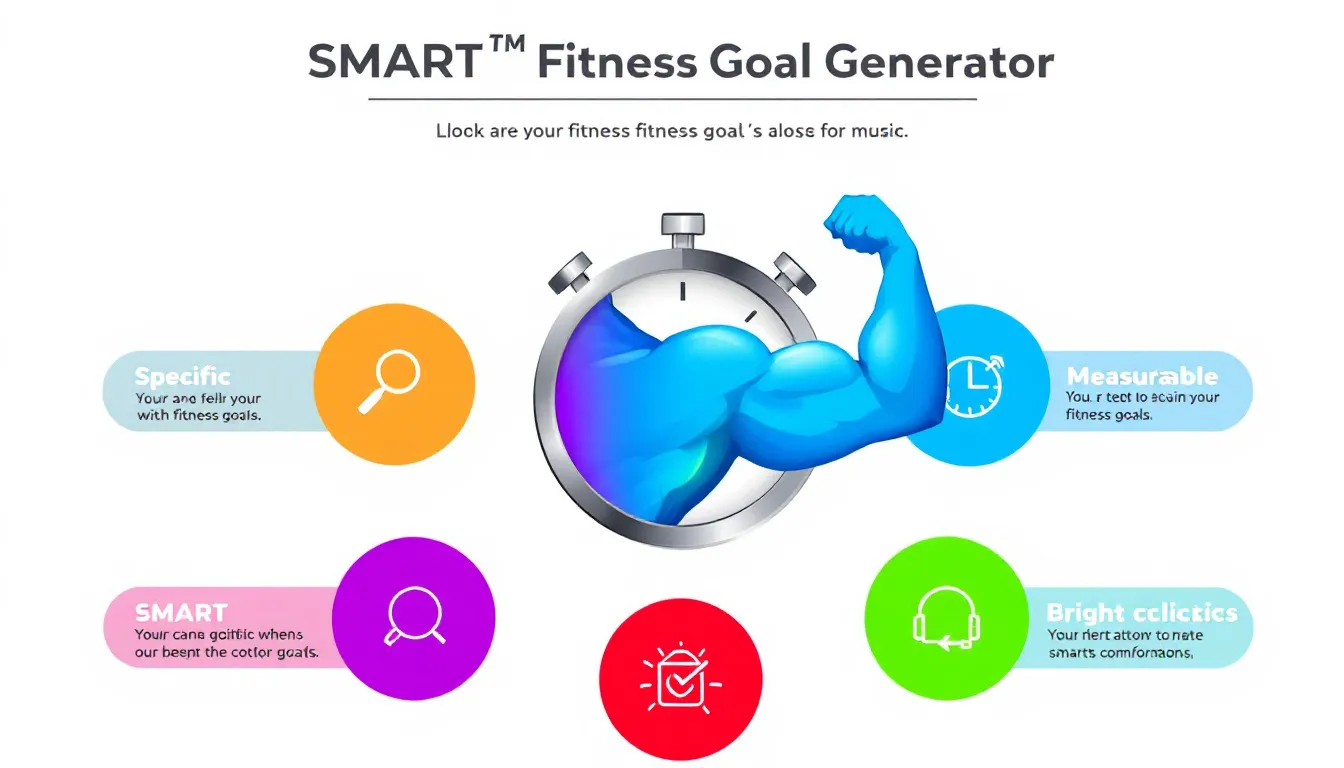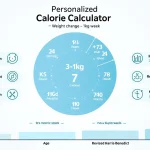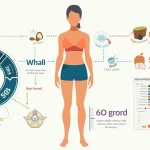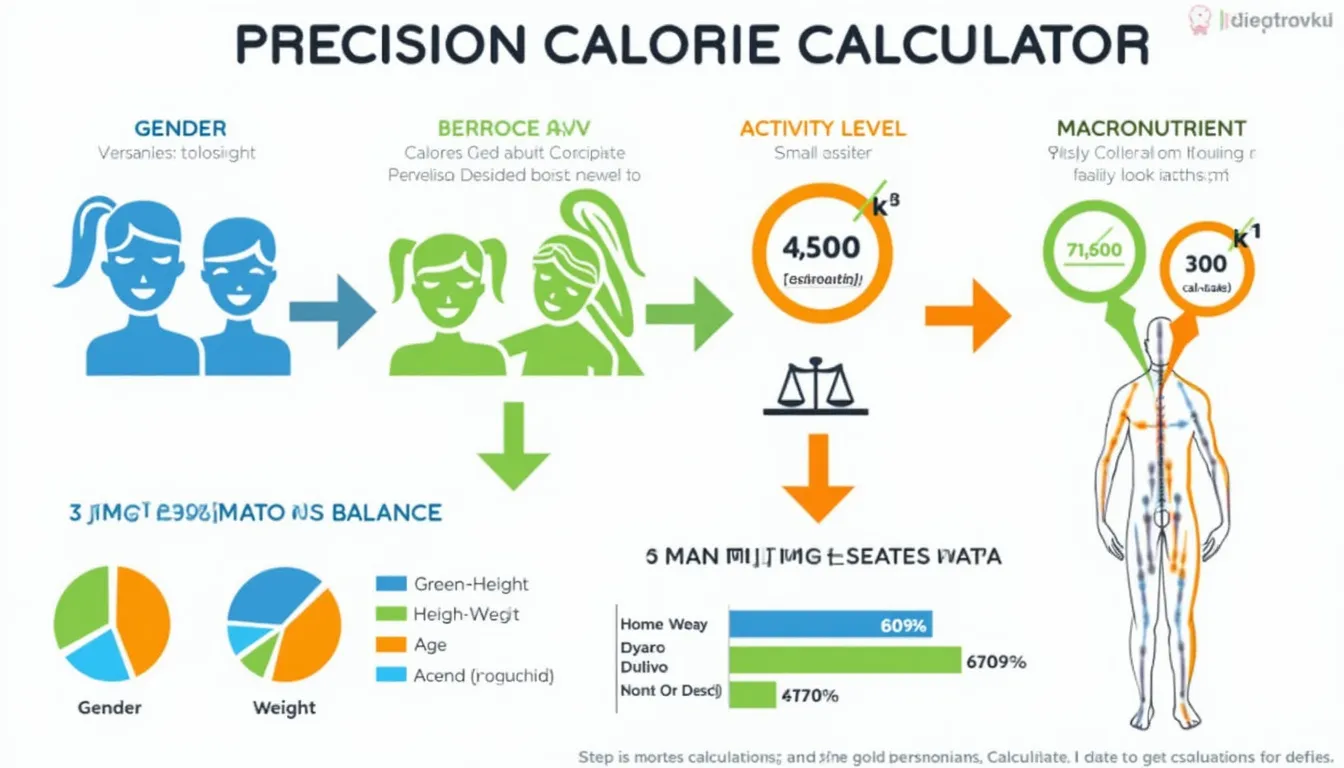Is this tool helpful?
How to Use the SMART Fitness Goal Generator Effectively
To make the most of our SMART Fitness Goal Generator, follow these steps:
- Specific Result: Enter the precise outcome your client wants to achieve. For example, “Increase bench press by 50 pounds” or “Complete a 10K race in under 50 minutes.”
- Current Fitness Level: Describe your client’s starting point. This could be “Moderately active, exercises 2-3 times per week” or “Advanced weightlifter with 5 years of experience.”
- Personal Preferences: Include any activities your client enjoys or dislikes. For instance, “Loves swimming and cycling, but dislikes running” or “Prefers outdoor activities over gym workouts.”
- Long-Term Objectives: Outline your client’s broader fitness aspirations. Examples might include “Compete in a bodybuilding competition within 2 years” or “Maintain an active lifestyle into retirement.”
- Lifestyle Constraints: Mention any factors that might affect your client’s fitness journey. This could be “Works 60-hour weeks with frequent travel” or “Single parent with limited free time.”
- Timeline Preference: Specify how long your client wants to take to achieve their goals. For example, “4 months” or “1 year.”
- Click “Generate SMART Fitness Goals” to receive personalized, actionable objectives.
Unlocking Your Fitness Potential: The Power of SMART Goal Setting
Welcome to our SMART Fitness Goal Generator, a game-changing tool designed to revolutionize the way personal trainers and fitness enthusiasts approach goal setting. This innovative calculator harnesses the power of the SMART criteria – Specific, Measurable, Attainable, Relevant, and Time-bound – to create tailored fitness objectives that set you and your clients up for success.
What Are SMART Fitness Goals?
SMART fitness goals are carefully crafted objectives that provide a clear roadmap for achieving desired fitness outcomes. Let’s break down each component:
- Specific: Clearly defined and focused on a particular aspect of fitness.
- Measurable: Quantifiable, allowing progress to be tracked and evaluated.
- Attainable: Challenging yet realistic, considering current fitness levels and resources.
- Relevant: Aligned with broader fitness aspirations and personal preferences.
- Time-bound: Set within a specific timeframe to create urgency and motivation.
By incorporating these elements, our SMART Fitness Goal Generator creates objectives that are not just wishful thinking, but actionable plans for success.
Benefits of Using the SMART Fitness Goal Generator
1. Personalized Goal Setting
Our tool takes into account individual factors such as current fitness level, personal preferences, and lifestyle constraints. This personalization ensures that the generated goals are not only challenging but also realistic and tailored to each client’s unique circumstances.
2. Increased Motivation and Accountability
SMART goals provide clear targets and timelines, which can significantly boost motivation. Clients are more likely to stay committed when they have specific, measurable objectives to work towards. The time-bound aspect also creates a sense of urgency, encouraging consistent effort.
3. Enhanced Progress Tracking
With measurable goals, it becomes easier to monitor progress over time. This allows for regular check-ins and adjustments, keeping clients on track and motivated by their improvements.
4. Improved Client-Trainer Communication
The SMART framework provides a common language for discussing fitness objectives. This clarity helps align expectations between trainers and clients, reducing misunderstandings and fostering a more productive working relationship.
5. Long-Term Vision with Short-Term Action Steps
While the generator considers long-term objectives, it breaks them down into manageable, time-bound goals. This approach helps clients see the bigger picture while focusing on immediate, actionable steps.
6. Increased Success Rate
Studies have shown that individuals who set SMART goals are more likely to achieve their objectives compared to those who set vague or unrealistic goals. By using our generator, you’re setting yourself and your clients up for success from the start.
Addressing User Needs: How the SMART Fitness Goal Generator Solves Common Problems
Problem 1: Lack of Direction in Fitness Planning
Many individuals struggle to define clear fitness objectives, often resorting to vague goals like “get in shape” or “lose weight.” Our SMART Fitness Goal Generator addresses this by prompting users to input specific desired results, ensuring that the generated goals are focused and actionable.
Example:
Input: Client wants to “get stronger”
Generated SMART Goal: “Increase squat weight by 30 pounds, from 150 lbs to 180 lbs, within 12 weeks through a progressive overload program, training legs twice per week.”
Problem 2: Unrealistic Expectations
Setting overly ambitious goals can lead to disappointment and demotivation. Our generator takes into account the client’s current fitness level and lifestyle constraints to create attainable objectives that challenge without overwhelming.
Example:
Input: Beginner runner wants to “complete a marathon”
Generated SMART Goal: “Progress from running 5K to completing a half-marathon (13.1 miles) in 6 months, following a structured training plan with 4 runs per week, gradually increasing distance and endurance.”
Problem 3: Lack of Measurability
Without concrete metrics, it’s difficult to track progress and stay motivated. The SMART Fitness Goal Generator ensures that all goals include specific, measurable targets.
Example:
Input: Client wants to “improve flexibility”
Generated SMART Goal: “Increase forward fold reach by 4 inches, from fingertips 6 inches above the floor to touching the floor, within 8 weeks through daily 15-minute stretching routines focusing on hamstrings and lower back.”
Problem 4: Misalignment with Personal Preferences
Generic fitness goals often fail to consider individual preferences, leading to decreased adherence. Our tool incorporates personal preferences to create goals that clients are more likely to enjoy and stick with.
Example:
Input: Client enjoys outdoor activities and dislikes gym workouts
Generated SMART Goal: “Complete a 25-mile trail hike within 3 months, progressively increasing weekly hike distances from 5 miles to 15 miles, incorporating 2 outdoor strength training sessions per week using bodyweight exercises and natural obstacles.”
Problem 5: Lack of Time-Bound Objectives
Open-ended goals can lead to procrastination and lack of urgency. The SMART Fitness Goal Generator always includes specific timeframes, creating a sense of commitment and allowing for regular progress checks.
Example:
Input: Client wants to improve cardiovascular endurance
Generated SMART Goal: “Decrease 5K run time from 30 minutes to 25 minutes within 10 weeks, following a structured interval training program with 3 running sessions and 2 cross-training sessions per week.”
Practical Applications: Real-World Examples of SMART Fitness Goals in Action
Case Study 1: Weight Loss Transformation
Client Profile: Sarah, 35, office worker, currently sedentary, wants to lose weight for her upcoming wedding in 8 months.
Generated SMART Goal: “Lose 30 pounds (from 180 lbs to 150 lbs) in 32 weeks through a combination of calorie-controlled diet and exercise. Achieve this by:
- Reducing daily calorie intake to 1,500 calories, tracked using a food diary app.
- Engaging in 45-minute cardio sessions 4 times per week (Mon, Wed, Fri, Sat).
- Incorporating 30-minute strength training sessions 2 times per week (Tue, Thu).
- Aiming for a consistent weight loss of 1 pound per week, with bi-weekly weigh-ins and measurements.”
Outcome: By breaking down the overall weight loss goal into specific, weekly targets and providing a clear action plan, Sarah was able to stay motivated and consistently work towards her goal. The regular weigh-ins allowed for progress tracking and timely adjustments to her plan when needed.
Case Study 2: Strength Building for a Competitive Powerlifter
Client Profile: Mike, 28, experienced powerlifter, preparing for a competition in 6 months, wants to increase his total lift weight.
Generated SMART Goal: “Increase total competition lift (sum of squat, bench press, and deadlift) by 100 pounds, from 1,200 lbs to 1,300 lbs, within 24 weeks. Achieve this by:
- Following a periodized training program with 5 gym sessions per week.
- Increasing squat by 40 lbs (from 450 lbs to 490 lbs).
- Improving bench press by 25 lbs (from 315 lbs to 340 lbs).
- Enhancing deadlift by 35 lbs (from 435 lbs to 470 lbs).
- Conducting monthly max-out sessions to track progress and adjust training intensity.”
Outcome: The specific strength targets for each lift provided Mike with clear benchmarks to work towards. The periodized program and regular progress checks allowed for optimal training adaptation and timely adjustments, leading to successful strength gains.
Case Study 3: Improving Cardiovascular Fitness for a Busy Professional
Client Profile: Lisa, 42, corporate executive with limited time, wants to improve her overall cardiovascular fitness.
Generated SMART Goal: “Improve cardiovascular fitness by reducing resting heart rate from 72 bpm to 62 bpm and increasing VO2 max from 30 ml/kg/min to 35 ml/kg/min within 16 weeks. Achieve this by:
- Engaging in 30-minute high-intensity interval training (HIIT) sessions 3 times per week (Mon, Wed, Fri) before work.
- Completing a 60-minute moderate-intensity cardio session (cycling or swimming) on weekends.
- Incorporating 10-minute active breaks during workdays, including brisk walking or stair climbing.
- Tracking progress with a fitness watch, monitoring daily step count (target: 10,000 steps) and weekly active minutes (target: 150 minutes).”
Outcome: By providing specific, measurable targets for heart rate and VO2 max, Lisa had clear indicators of her cardiovascular improvement. The varied workout plan, including HIIT and active breaks, allowed her to make significant progress despite her busy schedule.
Case Study 4: Flexibility and Mobility Improvement for an Older Adult
Client Profile: Robert, 65, retired, wants to improve overall flexibility and mobility to maintain independence and reduce the risk of falls.
Generated SMART Goal: “Enhance flexibility and mobility over 12 weeks by:
- Increasing sit-and-reach test score from -2 inches to +2 inches.
- Improving timed up-and-go test from 12 seconds to 9 seconds.
- Enhancing single-leg stand time from 15 seconds to 30 seconds.
- Achieve these improvements through:
- Daily 20-minute stretching routine focusing on major muscle groups.
- Twice-weekly 45-minute yoga sessions (Mon, Thu).
- Three 30-minute balance and mobility workouts (Tue, Fri, Sat) including exercises like heel-to-toe walk, standing on one foot, and gentle lunges.
- Conduct bi-weekly assessments to track progress and adjust the program as needed.”
Outcome: The specific, measurable goals for flexibility and balance tests provided Robert with clear targets to work towards. The varied program, including stretching, yoga, and balance exercises, addressed multiple aspects of his mobility, leading to significant improvements in his overall function and confidence in daily activities.
Frequently Asked Questions (FAQ)
1. How often should I update my SMART fitness goals?
It’s recommended to review and potentially update your SMART fitness goals every 8-12 weeks. This allows enough time to see progress while also ensuring your goals remain challenging and aligned with your evolving fitness level and objectives.
2. Can I have multiple SMART fitness goals simultaneously?
Yes, you can have multiple SMART fitness goals concurrently, especially if they target different aspects of fitness (e.g., strength, cardiovascular endurance, flexibility). However, be cautious not to set too many goals at once, as this can become overwhelming and dilute your focus.
3. What if I’m not making progress towards my SMART fitness goal?
If you’re not seeing progress, it’s time to reassess. Check if your goal is truly attainable given your current circumstances. Consider factors like sleep, nutrition, and stress that might be impacting your progress. You may need to adjust your goal or your approach to achieving it.
4. How do I set SMART fitness goals for clients with health conditions?
For clients with health conditions, it’s crucial to work in conjunction with their healthcare provider. Set goals that are appropriate for their condition and focus on improving overall health and function rather than purely aesthetic goals. Always prioritize safety and consider any limitations or precautions recommended by their doctor.
5. Can SMART fitness goals be used for mental health and wellbeing?
Absolutely! SMART goals can be applied to mental health and wellbeing aspects of fitness. For example, a SMART goal could be: “Reduce stress levels by practicing 10 minutes of mindfulness meditation daily for 30 days, as measured by a decrease in perceived stress scale score from 25 to 18.”
6. How do I motivate clients to stick to their SMART fitness goals?
Regular check-ins, positive reinforcement, and celebrating small wins are key to keeping clients motivated. Consider implementing a reward system for reaching milestones. Also, help clients visualize their progress by using charts, photos, or fitness tracking apps.
7. Can SMART fitness goals be adjusted mid-way?
Yes, SMART goals can and should be adjusted if circumstances change or if the original goal proves to be too easy or too challenging. The key is to maintain the SMART criteria when making adjustments.
8. How detailed should the action plan be in a SMART fitness goal?
The action plan should be detailed enough to provide clear guidance but not so complex that it becomes overwhelming. It should outline specific actions, frequency, and intensity of activities, but allow some flexibility for real-life circumstances.
9. Are SMART fitness goals suitable for beginners?
SMART goals are excellent for beginners as they provide clear direction and measurable targets. For newcomers to fitness, it’s important to set realistic, attainable goals to build confidence and establish consistent habits.
10. How do I set SMART fitness goals for maintaining results after achieving initial objectives?
Maintenance goals can also follow the SMART criteria. For example: “Maintain current body weight of 150 lbs within a 3-pound range for the next 6 months by continuing with 4 weekly workouts and tracking daily calorie intake to average 2,200 calories per day.”
By leveraging the power of SMART goal setting and utilizing our SMART Fitness Goal Generator, you’re taking a significant step towards achieving tangible, meaningful results in your fitness journey. Remember, the path to fitness success is paved with clear objectives, consistent effort, and regular evaluation. Start setting SMART goals today and watch as you transform your aspirations into achievements!
Important Disclaimer
The calculations, results, and content provided by our tools are not guaranteed to be accurate, complete, or reliable. Users are responsible for verifying and interpreting the results. Our content and tools may contain errors, biases, or inconsistencies. We reserve the right to save inputs and outputs from our tools for the purposes of error debugging, bias identification, and performance improvement. External companies providing AI models used in our tools may also save and process data in accordance with their own policies. By using our tools, you consent to this data collection and processing. We reserve the right to limit the usage of our tools based on current usability factors. By using our tools, you acknowledge that you have read, understood, and agreed to this disclaimer. You accept the inherent risks and limitations associated with the use of our tools and services.







